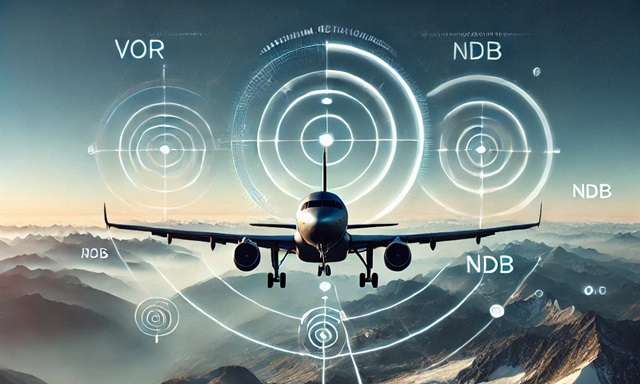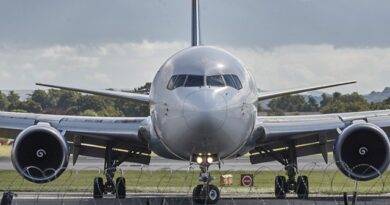Minimum Reception Altitude (MRA): A Comprehensive Guide
In aviation, pilots and air traffic controllers must understand various terms and concepts related to flight operations, including the Minimum Reception Altitude (MRA). This key concept ensures the safety and effectiveness of communication and navigation during flights. In this article, we will explore what MRA is, why it’s important. Moreover, we will examine how it is calculated, and how it fits into overall flight operations.
What is Minimum Reception Altitude (MRA)?
The Minimum Reception Altitude (MRA) refers to the lowest altitude at which an aircraft can receive reliable signals from ground-based navigational aids, such as VOR (Very High-Frequency Omnidirectional Range) stations, NDBs (Non-Directional Beacons), or DMEs (Distance Measuring Equipment). It is critical for pilots to know the MRA to maintain effective navigation and communication, especially when flying over mountainous terrain or remote areas.
Importance of MRA in Flight Operations
The MRA plays a crucial role in ensuring that pilots can maintain radio contact with air traffic control (ATC) and receive clear navigational signals. Failing to maintain an altitude above the MRA can result in signal loss, which can affect navigation and communication, potentially leading to safety hazards. The MRA is particularly significant during instrument flight rules (IFR) operations, where pilots rely heavily on navigation aids to guide their aircraft through poor visibility conditions.

How is MRA Determined?
MRAs are determined by evaluating the coverage of ground-based navigational aids. Several factors influence the MRA, including:
- Terrain: Mountainous areas or regions with uneven geography often require a higher MRA to ensure signals can reach the aircraft without obstruction.
- Distance from the Navigational Aid: The farther an aircraft is from a VOR or other aid, the higher it must fly to receive a reliable signal.
- Type of Navigational Aid: Different aids have varying ranges and signal strengths, affecting the required altitude for reliable reception.
MRAs are typically published on Instrument Flight Rules (IFR) charts and are updated as necessary to reflect changes in terrain, infrastructure, and airspace design.
MRA vs. Minimum Enroute Altitude (MEA)
The MRA is often confused with the Minimum Enroute Altitude (MEA), but the two serve different purposes. While the MRA ensures that an aircraft can receive navigational signals, the MEA guarantees both navigation signal reception and safe terrain clearance. The MEA is generally higher because it factors in obstacle clearance, making it the minimum altitude required to safely fly between two points.
Situations Requiring MRA Awareness
MRAs are particularly relevant in specific situations, such as:
- Mountainous Flights: When flying over mountainous regions, pilots must remain above the MRA to ensure signal reception. These areas often have a higher MRA due to the obstructive terrain.
- Remote Areas: In regions with fewer navigational aids, aircraft need to maintain altitudes above the MRA to avoid signal loss.
- Flight Transitions: When an aircraft is transitioning between navigational aids, staying above the MRA ensures uninterrupted signal reception, which is vital for following the designated flight path accurately.
How Pilots Use MRA
Pilots use the MRA to plan their flights and ensure they maintain the necessary altitude to avoid losing communication or navigational signals. Before departure, pilots review IFR charts that show MRAs for different routes, waypoints, and airspaces. During the flight, if a pilot needs to descend for operational reasons (e.g., to avoid weather), they must ensure they do not go below the published MRA unless they have visual reference to the ground or other approved navigation methods.
Adjusting Flight Altitude for MRA
In cases where a pilot finds it necessary to descend below the MRA, they must obtain permission from ATC and may need to rely on alternate methods, such as GPS navigation. Modern aircraft equipped with advanced navigation systems often use satellite-based navigation, which can sometimes reduce the need to follow traditional MRAs, but MRAs remain essential in airspace relying heavily on ground-based aids.
Conclusion
The Minimum Reception Altitude (MRA) is a vital safety measure in aviation, ensuring reliable navigation and communication during flight. Pilots must stay informed about the MRA for their specific route, particularly when flying in challenging areas like mountainous regions or remote airspace. By adhering to the MRA and other enroute altitudes, pilots help maintain the safety and efficiency of air travel.
Understanding and respecting the MRA is a fundamental aspect of flight planning and operations under IFR, contributing to safer skies for everyone.
References
- Federal Aviation Administration (FAA). “Aeronautical Information Manual (AIM).”
FAA.gov - International Civil Aviation Organization (ICAO). “Manual on Air Navigation Services.”
ICAO.int - Jeppesen. “IFR Enroute Charts and Altitudes.”
Jeppesen.com


